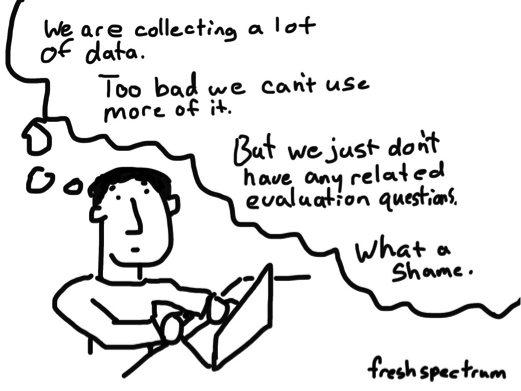Dena Lomofsky, managing member of Southern Hemisphere and Vanesa Weyrauch, co-founder of Politics & Ideas work together to deliver specialist online courses on MEL for think tanks, in the field of policy influence.
There are many exciting ways of doing MEL for think tanks, which we would love to share with you. The complexity of policy influence has been long acknowledged: still organisations are often asked to prove attribution or direct contribution to a specific policy change. Thus, how can we use MEL to bridge this gap between uncertainty and complexity and the need to prove we are having impact with the resources we invest?
Typically think tank staff is overstretched; meeting multiple demands of producing high quality research evidence, disseminating results and frequently securing funds as well! As an evaluation respondent once commented: “We appear to be on top of it, under the surface we a paddling like crazy.” Is MEL of policy influence possible and worth the effort?
Hot Tips:
You define success: Set your own policy influence goals, based on your understanding of the policy issue, process and context. Clearly defining your policy influence objectives is important: is it just about affecting concrete policy content or is your major battle to convince policymakers about a new way of framing a policy solution? Clear policy influence objectives will also lead to better evaluation questions.
Keep it simple: Increase the sophistication of your MEL effort as the confidence of your organisation grows.
Build on your strengths: MEL requires research skills. Isn’t this skill inherent in most think tanks? Conduct a situation analysis, identify how you could harness the skills and data you have to inform program improvement.
Choose a suitable MEL framework: There are many frameworks for MEL that also influence your choice of evaluation technique; get to know what is out there are find one that suits your organisational capacities and approach.
Lessons learned: Use internal reflection to motivate people about MEL, otherwise it can become an administrative chore. After action review is a good way to engage people in evaluative learning practices.
The onthinktanks school online course (9/26 – 11/11) on MEL for policy influence explores these topics. The fee is $500.
Rad Resources:
A framework for designing MEL for policy research projects: Pasanen, T., and Shaxson, L. (2016) ‘How to design a monitoring and evaluation framework for a policy research project’. ODI
Onthinktanks and Politics&Ideas collection of articles on MEL for policy influence.
A literature review on evidence to decision making that provides a framework for theory based evaluations: Langer L, Tripney J, Gough D (2016). The Science of Using Science: Researching the Use of Research Evidence in Decision-Making. London: EPPI-Centre, UCL
Do you have questions, concerns, kudos, or content to extend this aea365 contribution? Please add them in the comments section for this post on the aea365 webpage so that we may enrich our community of practice. Would you like to submit an aea365 Tip? Please send a note of interest to aea365@eval.org . aea365 is sponsored by the American Evaluation Association and provides a Tip-a-Day by and for evaluators.

